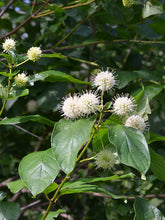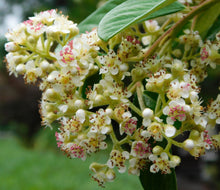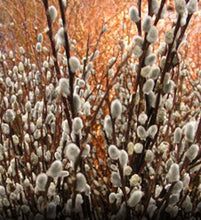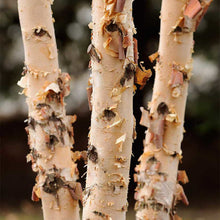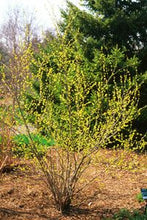
This assortment of streambank trees and shrubs provide a variety of berries and seeds to nourish wildlife and beautify the wetlands. Two of each species. (10 total trees/pack).
- 12-18" Spice Bush - Named for its spicy, fragrant leaves and stems, is native to moist woodlands in the Midwest and occasionally found in the Chicago area. It is most often used in shrub borders and naturalizing landscaping. Bright red fruits ripen from July through October on female plants, but are only showy once the foliage falls off. High in fat content in the berries are quickly eaten by various species of birds.
- 12-18" Pussy Willow - A shrub that is known for its long branches that produce fuzzy, gray “catkins” which are flower clusters produced by willow shrubs. These catkins are dioecious, meaning they can be either male or female. Male catkins are gray and bloom in the early spring, while female catkins are smaller, green, and less furry. These deciduous shrubs thrive in wetlands and moisture-rich areas, then shed their leaves in the winter. They can grow up to 36 feet tall if it is not pruned. Pussy willows are easy to propagate, making them a popular choice for home gardeners. Dried pussy willows are a popular form of low-maintenance decor in lieu of other plants that need to be watered.
- 12-18" River Birch - This primarily streambank tree is a medium to tall tree, growing 60-80 feet at maturity and about 40 wide. Trees typically live 50 -75 years. The trunk typically grows about 2 feet in diameter but occasionally will be much wider. This shade tree has highly symmetrical branching and upright pyramidal to upright oval form. Although it naturally forms just a single trunk, it is frequently sold in multiple-trunked form with two to five trunks per tree.
- 12-18" Button Bush - A multi-stemmed shrub which grows 6-12 ft. or occasionally taller. Leaves in pairs or in threes, petiolate; blade up to 8 inches long, ovate to narrower, sometimes 1/3 or less as wide as long, with a pointed tip and rounded to tapered base, smooth margins and glossy upper surface, lower surface duller. Glossy, dark-green leaves lack significant fall color. Flowers small, borne in distinctive, dense, spherical clusters (heads) with a fringe of pistils protruded beyond the white corollas. Long-lasting, unusual blossoms are white or pale-pink, one-inch globes. Subsequent rounded masses of nutlets persist through the winter. Trunks are often twisted. Spreading, much-branched shrub or sometimes small tree with many branches (often crooked and leaning), irregular crown, balls of white flowers resembling pincushions, and buttonlike balls of fruit. Buttonbush is a handsome ornamental suited to wet soils and is also a honey plant. Ducks and other water birds and shorebirds consume the seeds.
- 12-18" Nannyberry - A versatile native shrub with excellent year-round interest, Nannyberry Viburnum features showy white flowers in May and burgundy leaf color in autumn with dark blue berries. A large upright shrub, it spreads by roots to form colonies and makes an excellent privacy screen or hedgerow. It can be maintained as a small tree by pruning stems and removing the suckers at the base. Adaptable to a wide range of soils, this native viburnum is found in low moist woods or near stream banks but will tolerate drier sites. Very shade tolerant in nature, it grows larger in open sunny areas.
Photo credits: University of Minnesota Extension, Purdue Fort Wayne University, Johnson's Nursery, John M. Hagstrom, Arbor Day Foundation





